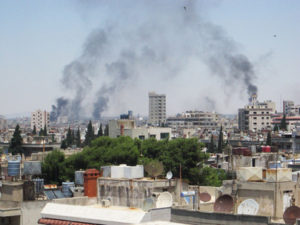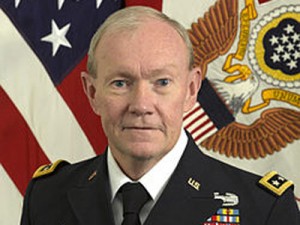“Ooops, I Did It Again”: How the BBC Funnels Stories for Financial Gain
by Julian Vigo - CounterPunch
September 30, 2016
 Earlier this year, it came to light how Hello! fabricated an interview with George Clooney. Hello! Group, owner of the magazine, claims that it bought the Clooney interview from the Famous agency which had been “culled together from a series of interviews that took place over a period of time.”
Earlier this year, it came to light how Hello! fabricated an interview with George Clooney. Hello! Group, owner of the magazine, claims that it bought the Clooney interview from the Famous agency which had been “culled together from a series of interviews that took place over a period of time.”While the Hello! Group claims shock over the allegedly false representations made to them about this “interview,” this sort of hack journalism is nothing new to UK audiences.
Take this piece of journalism by the BBC entitled, “Woman Leaves Baby in London Cab.” This is an astonishing piece of fiction created by the BBC with the help of a cab driver looking to score some fast cash. Absent from the story is the mother’s voice, the person who allegedly “left” her child in the London cab, with the introductory notes to the story reading: “People leave all sorts of things in taxis – umbrellas, wallets, phones and even laptops. But one London cabbie had the shock of his life when he discovered something altogether more precious on his back seat: a baby girl.” Well that settles it! This must be what parents—especially mothers—do with their children. They just leave their children in taxis and at home scratch their heads wondering if they might not have forgotten something. The reason why I know what happened in the above story is that I am the mother in question whose voice was absent from every single media account.
Two years ago, I traveled to London with my child, who was then one and a half years of age. We stayed with a friend in Shoreditch and the first morning in London, I awoke unable to walk very well for about a half hour due to some sort of knee problem. I would learn later than I had a serious knee injury that suddenly manifested itself years later. As a result of this injury, I cancelled my meetings and took the opportunity to run some much needed errands for clothing for my daughter and myself. At the end of the day, picking up a taxi through Hailo in Covent Garden, I was met by a bulky Mercedes Vito taxi, the van update to the traditional London taxi. The problem with these vans, however, is that they are extremely inconvenient for the elderly, pushchairs, and the disabled, as the step up into the back of the van is extremely high. When the driver brought me to my friend’s flat in Shoreditch, because of this height and a carrying few small bags, I asked him if he could wait as I took out the bags first before my daughter since I did not wish to overdo any stress on my knee. My daughter was in a sling on my body, but when we stopped to leave, I sat her on the back seat for a moment as I paid the driver and said quite clearly, “Please wait while I unload a few bags and then return for my child.” His response: “No problem.”
Anyone who has small children knows that you would never place a year-and-a-half-year-old child on the sidewalk to leave them to stand as you turn around to get bags from a van. That would leave them in danger as they would walk off into traffic. Instead, I quickly put the three bags two metres away on the curb, turned around to get my daughter, and at that moment witnessed the taxi pulling away. I was so upset that I completely forgot about my injured knee and tried to run after the taxi, but physically could not. A woman passing by tried to run as well, but she was in high heels and also unable. I was screaming and quite worried about my child, upset that this driver had not waited, and I was even angrier that he left the curb with the door to his van completely open, only closing very slowly, as it was an automatic door, as he reached the next corner to turn right. A man came seconds later trying to calm me down saying that the cab was now stuck in a one-way system and would need at least ten minutes to get back to me. I tried to call Hailo to have them contact the driver but Hailo does not make it easy to contact them at all. I was stuck in an endless Google loop of looking for information and finding nothing more than a download link and review sites for Hailo and no other option outside of calling the police. After ten minutes passed and the driver did not return, I called the police. I remember very little of the twenty, twenty-five minute wait for my daughter aside from feeling frustrated and quite helpless with a dash of a tiny bit of hope which hinged upon Hailo having registered the cab I had taken. I was also worried this driver would brake and that she would fall forward or even worse.
The police came about ten minutes later and a few minutes after this, the cab arrived. The woman and man who assisted me were wonderful but overall I was quite devastated by the fact that a driver could act so carelessly. I told the police I did not wish to press charges against him as I just wanted to return home. The driver did not apologise and the police took the child from him and we entered my friend’s flat. A few minutes later, I received a phone call from the driver who asked if I was OK. I was concerned that he called me since he saw that I was quite upset. I later realised he was worried that I would file a report against him and he was attempting to discern how upset I was. I asked him to please leave me alone and I spent that afternoon with my child, still somewhat in shock.
A month later, learned that The Sun, more or less the UK’s version of National Enquirer, had run a version of what happened to us that day which more resembled fiction than fact. And from this first publication by The Sun, other media merely piggy-backed the piece, re-reporting what The Sun had reported from this driver’s fantasy of heroism. Articles like this were reprinted: “Mother Forgets Baby in Taxi.” And there were half a dozen more which I chased down one by one. The only difference is that The Daily Mail, ITV, The Sun, and various other media were more than happy to remove the defamatory articles once they learned that there was no factual basis to what this driver had told them. The only partially researched representation of this incident was that of The Daily Mail whose Amanda Williams at least interviewed the two people who were at the scene when this incident happened, one of whom told her that she had heard me ask the driver to wait as I pulled my bags out before taking my daughter. The more troubling question is why did no other media report this? Why was there no reporting done whatsoever, but merely cutting and pasting of a paid piece of yellow journalism?
I later learned that The Sun paid the driver for his story and ran the first article. They would not tell me how much they paid Ertan Rasit for the story, but they did, in the end, remove the piece. I would also learn from another journalist that each time this driver told his story, the details would grew and the story morphed a bit more each telling. She said that apparently he was in invited on a morning talk show and drove his cab onto the sound stage. And the stories about this incident were replete in the media two years ago with titles such as “Unwitting Mother Leaves One-Year-Old in Back of London Cab,” “Baby Left in Back of London Black Cab” where I “forgot” my baby, and even the more theatrically titled, “My Fare Baby!” The sheer level of misogyny about British media culture is as painfully present as are the media ethics of the day. Indeed, reading these pieces one could easily believe I grabbed my l grabbed my clutch and then uttered, “Hmmm, it feels like I am missing something….What could that be?” And then close-up à la Home Alone of me grabbing my face in horror that I had “forgotten” my child. The fact that every single UK media source failed to contact the mother in their story speaks volumes for the value of women—mothers or not—in British society. Apparently any man can do the job!
More troubling, however, is that from the list of media which ran this story, the BBC which featured a slash and burn piece starring the driver who invented the entire story, was the only media body which refused to take down the piece after making a request for removal based upon evidence presented. I told the BBC that none of what they covered their in the Radio 5 broadcast was factually true: from my “leaving” my child on the back seat, to the “fifteen-twenty-thirty people” applauding this taxi driver’s return, lauding him a “hero,” to my being “in hysterics” (I was relieved when he arrived). The hero complex this man clearly manifested in the BBC interview was buttressed by the BBC’s bad journalism as the BBC interlocutor-interviewer, by calling the cab driver a “hero”, did not think to contact me, an act entirely possible given that the police had my contact information. I was not considered relevant to the heart of the story that, paradoxically, involved my child and myself. Since my child could not speak and I could, one must wonder why the BBC chose to run a rather sorted piece of yellow journalism whose sole aim was to make a hero out of the male protagonist while obfuscating the voice of the female who could talk, while conveniently using my child as a prop. One must also wonder why the BBC which collects license fees from its users, is profiting off stories-for-sale without so much as engaging in fact-checking, engaging in secondary and primary source verifications, or doing anything remotely resembling journalism. One would seriously be better off reading UFO stories in the National Enquirer, sifting through financial blogs, or watching pet videos which are, at the very least, completely transparent in their message.
When I took this claim forward with the BBC, the response was as tragic as it was comic. Here is a snippet from their 13 April, 2015 correspondence to me:
The Committee concluded that:
• the reporting of the incident was duly accurate, given audience expectations of the programme, with its remit to cover, among other news, human interest stories.
• it was duly accurate to use the word “left”, when describing how the child came to be in the cab, and that this did not imply the complainant was to blame.
• there was no evidence to suggest that the driver deliberately “took” the child and the story was duly accurate in its description of the taxi driver retracing his steps.
• the reference to a cheering crowd was demonstrably part of the driver’s description of events.
• it agreed with the Editorial Complaints Unit’s Complaints Director that it would have given the audience “more information if other details had been included” but that the omission of such details did not result in a significantly misleading version of events.
• there was no evidence that the BBC had materially misled the audience so as to cause unfairness.
• at the time of broadcast, the BBC did not know the identity of the complainant, or the witness she mentioned in her complaint, and so had been unable to approach them for their version of events.
The BBC’s conclusions basically mean that:
• the BBC can misrepresent any story because the “audience expectations” are so low (as we now know they should be);
• that vocabulary ceases to have any meaning (where the BBC decides it should not) is a rather appalling and cynical exceptionalism to basic grammar and logic (to leave in this case is a transitive verb);
• that there was no evidence that the driver “deliberately ‘took’” my child did not form any part of my complaint about BBC journalistic ethics, but their allowing the one person who put my child in danger to posit himself as a hero does speak to the equal depravity of the BBC (for its lack of any investigation) and this driver, for his money-loving mythomania;
• that the less work a BBC reporter actually engages to investigate—or, in this case, not investigate whatsoever—that this fact alone abdicates the BBC from the responsibility of presenting any counter-information or facts, whereby the driver’s description becomes the only description and thus, not the BBC’s responsibility;
• that by omitting details (because nobody actually did any research towards this story with the BBC just funnelling this story from The Sun) there could only be the vast “omission of…details” which of course results in the omission of facts (this is just a basic tautology!) since the “significantly misleading version of events” began and ended when the BBC “borrowed” a story from a tabloid and then entertained one person retelling a fictionalisation of the original events;
• that by engaging in zero journalism or fact-checking, this is equated to “not materially misleading the audience so as to cause unfairness”; and
• that by doing nothing—quite literally nothing—the BBC will not only not know who the people are in their stories, but if the journalists close their eyes quite tightly, they might as well imagine where they are and hell, why not invent the entire story from the bottom up!
The entire exchange with the BBC went beyond the normal repetitive disregard for common sense and attentive dialogue that British bureaucratic structures largely encourage, thus enabling the robotic person signing off on these pieces of correspondence as largely lacking in empathy of any sort. The bottom line for the misrepresentations which were the entirely of this Radio 5 segment were simply couched in the language of low audience expectations (and after this debacle one can only why the expectations are not at rock bottom) and that the entire segment was basically willingly left un-investigated, allowed to stand as tabloid journalism, such that the BBC literally had no facts gathered (remember, because it interprets the absence of facts as the impossibility of researching them and it reinvents vocabulary to suit its bottom line journalism). Sadly, this organisation would no sooner admit to having committed an error than it would to conceding that my complaint had nothing to do with my being identified (or not). The point of my compliant was purely about the absence of facts— that the BBC had not bothered to do any research whatsoever—to include contacting and interviewing me, to incorporating actual research into locating the witnesses which remarkably The Daily Mail had both found and interviewed, and to not give a platform to a man who had received an undisclosed sum for his tale from a most unscrupulous of publications.
At the end of this traumatic experience for my child and me, I witnessed quite a bit how the news is entirely manufactured even on a simple level of he said/she said. When it comes to the BBC, this agency is more interested, as I wrote the Trust in my followup to them, in creating allegorical scenes of a man “rescuing” a child and “helping out a wayward mother” when precisely the inverse was true. Having muddled, in such an unprofessional manner, simple journalistic practices in search of sensationalist media (was this a filler on a show where someone didn’t show up we must wonder?) the BBC unwittingly reveals the underbelly of its own incompetency masked as “journalistic rigour” and an even greater problem of misogyny within the media in this country.
While Hello! entirely fabricated an entire interview with George Clooney, at least that publication allowed him words, albeit fake words Clooney never enunciated. At the end of the day, the good people at the BBC and Hello! have much more in common than they might have ever dreamed. Meanwhile, the people of the United Kingdom really do need to wonder why they are paying television license fees to an entity that does not respect the most common precepts of journalistic ethics while making the complaints process an ultimate drudgery given the pages and pages of online forms to fill out which serve as a thinly veiled structure to discourage the public from speaking truth to power.
Julian Vigo is a scholar, film-maker and human rights consultant. Her latest book is Earthquake in Haiti: The Pornography of Poverty and the Politics of Development (2015). She can be reached at: julian.vigo@gmail.com
More articles by:Julian Vigo








